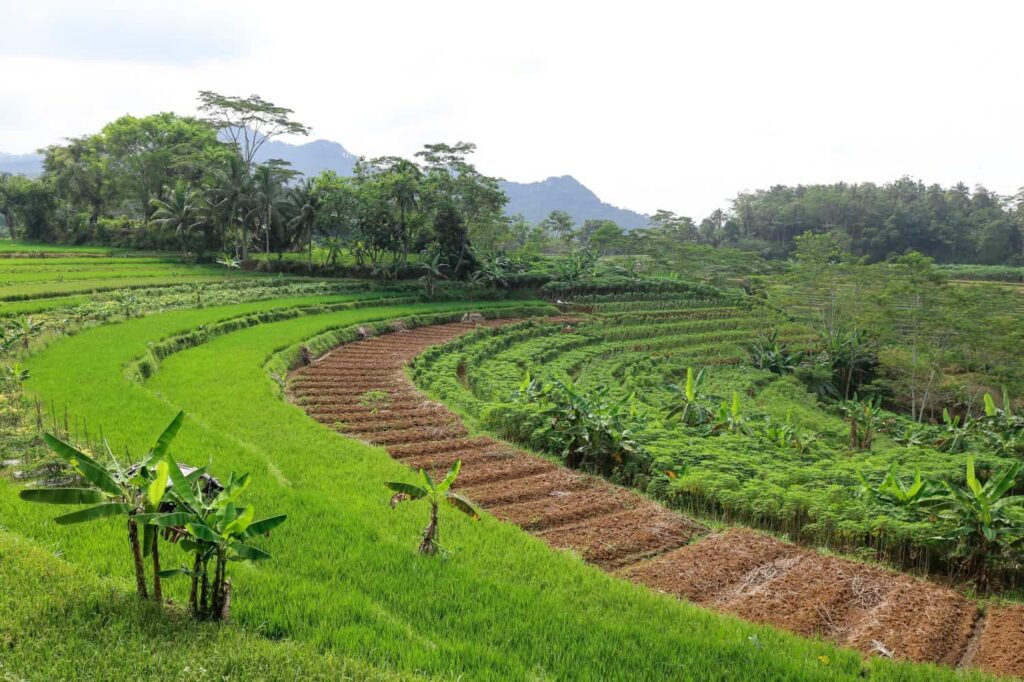When discussing food security in Africa, we often picture rural areas facing failed rains, subsistence farms, and struggling smallholders. However, the crisis is increasingly urban. Cities from Lagos to Accra to Nairobi are expanding, incomes are strained, and food prices have become wildly unpredictable. Modern African cities are fed by invisible threads of long, tangled supply chains stitched together by luck, labour, and low margins. A single border closure, a jump in fuel prices, or a week of heavy rains can sever these threads, leaving shelves empty and stomachs also empty. In Ghana, imported rice continues to fill nearly half of our urban bowls. Ghana imports significant quantities of tomatoes from Burkina Faso, with these imports valued at approximately $400 million annually. This means the tomatoes we consume travel over 1,000 kilometres from Burkina Faso to reach our plates in Accra. On good days, this system is costly. On bad days, it’s dysfunctional. When cities get food wrong, everything else falters: health, productivity, social cohesion, everything. Food isn’t just a commodity; it is a currency of peace. So the question is this: what if cities could feed themselves, or at least feed themselves better? This is where the concept of agro-rings comes in. What is an agro-ring? An Agricultural Ring in Farming (agro-ring) is a planned, productive belt of peri-urban and rural farmland that surrounds a city, much like a quiet engine. Unlike random sprawl or scattered fields, agro-rings are intentionally structured. They are designed to supply a city’s core food needs, such as maize, yam, vegetables, poultry, and dairy, all within a defined and logistically sensible radius. The logic is as ancient as it is urgent, yet simple: grow food closer to where it’s eaten. But the benefits extend far beyond proximity: Price stability: Shorter routes mean lower costs, fewer intermediaries, and more predictable prices. Farmer empowerment: Direct links to urban markets cut out middlemen and increase income per acre. Reduced waste: Fresher produce, less spoilage, better margins for everyone. Crisis resilience: When borders close or roads are flooded, cities don’t starve. Climate adaptation: Decentralised production reduces over-reliance on specific regions or imports. This isn’t a dream. It’s a return to something that African cities once had and a leap towards something we urgently need. The current fragility of Africa’s urban food system Let’s be honest: most African cities eat without a plan. Peri-urban land is consumed by speculation. We find various housing estates, brick kilns, and warehouses spread throughout. Food-producing land is pushed further out, often without a viable transport plan to bring it back in. Urban markets oscillate between feast and famine. One week, tomatoes rot in heaps due to oversupply; the next, they’re priced out of reach. There’s no buffer, no floor, and no map. Middlemen wield disproportionate power, often controlling prices and access to resources. The infrastructure consists of a patchwork of potholes and makeshift sheds. Cold storage is scarce. Aggregation is chaotic. Data remains mythical, to say the least. In times of crisis, this dysfunction becomes especially pronounced. During the COVID-19 pandemic, it wasn’t food that ran out; it was the ability to transport it. The 2022 fertiliser spike didn’t just affect farms; it sent ripple shocks to chop bars and corner stores. Cities cannot continue to exist like this. Food systems based on improvisation fail under stress. Resilience needs to be engineered. Agro-rings are a blueprint. How agro-rings would work in Ghana Imagine Greater Accra not as a sprawling area, but as a hub, intentionally nourished by a 100-kilometre ring of coordinated production. Step one: map what Accra eats. Quantify maize demand, onion usage, poultry consumption, etc. Then trace the origins of these food items and determine the costs related to any gaps in supply. Step two: zone production belts. Identify fertile, available land in the Eastern, Volta, and Central Regions within haulage reach. Prioritise crops that have high perishability and strong demand. Step three: build infrastructure where it counts. Aggregation centres with cold storage. Feeder roads that aren’t washed out by the first rains. Digital platforms that connect producers to buyers before harvest begins. Step four: align incentives. Provide tax breaks or concessional loans for processors, aggregators, and cold chain investors who locate within the agro-ring. Offer microinsurance and contract farming support for farmers within the ring. Step five: replicate. Kumasi, Tamale, Takoradi – each with their own ring, suited to their ecology and appetite. Stitch these into a national food resilience network. This isn’t about cutting off trade. It’s about anchoring it in something stronger than chance. Policy and private sector roles Agro-rings require alignment. Ministries of agriculture, roads, trade, and finance must cease planning in isolation. Local governments should have a seat, and a stake. The private sector must stop waiting to be invited. Logistics companies can invest in decentralised storage and cold hubs. Agritech firms can deploy traceability tools and AI-based yield forecasting. Financial institutions can design credit products that reflect seasonal realities. For instance, a fintech can provide pre-harvest loans linked to delivery contracts within the agro-ring, minimising risk for both farmers and lenders. Supermarkets and fast food chains can source a percentage of inputs from ring-certified producers. Donors and development banks can stimulate investment, fund essential infrastructure, reduce risks in blended finance, and assess performance. But the vision must be owned locally. Agro-rings won’t work if they are imposed; they succeed when they are co-created. Agro-rings in the AfCFTA era AfCFTA promises open markets, but open markets without secure supply are merely a mirage. Agro-rings transform cities into stable suppliers, not just consumers. A well-organised ring around Kumasi can supply food to southern Burkina Faso. A cassava processor in Takoradi with a consistent supply of roots can ship gari to Abidjan. When the local foundation is strong, the regional ambition becomes credible. Agro-rings make trade real. They translate protocols into products. Local food, global impact African cities are growing. Their food systems must evolve as well. Agro-rings aren’t a silver bullet, but they serve as a compass. They point towards a future where




